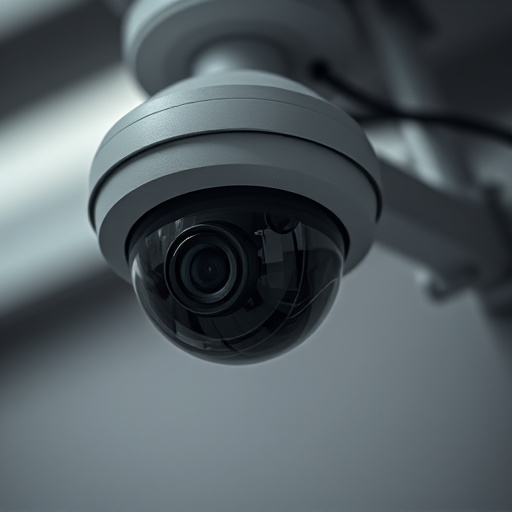Fake cameras are an innovative, cost-effective solution for neighborhood crime prevention. Strategically placed, these decoy devices deter criminals by signaling constant surveillance, significantly reducing theft and vandalism. With a simple yet powerful visual deterrent, residents can feel safer and communities can foster a collaborative security environment.
Neighborhood crime can cast a shadow over communities, impacting quality of life and safety. Luckily, innovative solutions like decoy cameras offer effective deterrents. This article explores how these convincing fake cameras can significantly reduce theft and boost security. We delve into the science behind visual deterrents, their operational mechanisms, and strategic implementation for optimal crime prevention in neighborhoods. Discover why integrating decoy cameras could be a game-changer in your community’s safety narrative.
- Understanding the Impact of Neighborhood Crime
- The Role of Visual Deterrents in Crime Prevention
- Decoy Cameras: How Do They Work?
- Implementing Fake Cameras for Effective Crime Deterrence
Understanding the Impact of Neighborhood Crime
The impact of neighborhood crime cannot be overstated, as it affects not just individuals but the overall sense of safety and community well-being. High crime rates often lead to a decline in property values, increased fear among residents, and a general feeling of insecurity. This is where decoy cameras step in as an effective deterrent. By strategically placing fake cameras around neighborhoods, criminals are sent a clear message: surveillance is present, making potential theft or vandalism attempts less appealing.
These fake cameras mimic the appearance and functionality of real security equipment, creating an illusion that intensifies the risk for offenders. The mere sight of them can alter criminal behavior, as individuals may think twice before targeting areas with apparent security measures in place. This simple yet powerful strategy empowers communities by giving them a tool to proactively prevent neighborhood crime without requiring extensive resources or constant patrols.
The Role of Visual Deterrents in Crime Prevention
Visual deterrents have long been recognized as a powerful tool in crime prevention, and decoy cameras are no exception. When strategically placed, these fake cameras send a clear message to potential thieves or vandals that they are being watched. This psychological effect can significantly deter criminal activity, as offenders often seek opportunities where consequences seem minimal. In many cases, the mere presence of security cameras, even if they are not real, can alter behavior and make individuals think twice before engaging in unlawful acts.
In neighborhoods looking to enhance their safety measures, the use of decoy cameras can be a game-changer. By deploying these devices at entry points, common crime spots, or areas with high property value, residents can create an environment that discourages criminal behavior. This proactive approach to neighborhood watch not only provides a physical deterrent but also fosters a sense of community vigilance, where everyone is encouraged to play their part in keeping the area safe and secure.
Decoy Cameras: How Do They Work?
Decoy cameras, also known as fake or dummy cameras, work by tricking potential thieves into believing that a property is under constant surveillance. These devices are designed to look like real security cameras but lack the recording capabilities. They are strategically placed in visible areas, often mimicking the positioning of actual cameras, to deter criminal activity. The simple act of seeing these decoys can significantly reduce neighborhood crime prevention efforts.
When installed correctly, fake cameras send a clear message that any attempt at theft or vandalism will be met with scrutiny. This psychological effect can discourage would-be offenders from targeting properties, as they might fear being caught on camera. Additionally, the presence of decoy cameras can make it harder for thieves to identify real security equipment, making their operations more complex and potentially risky.
Implementing Fake Cameras for Effective Crime Deterrence
Implementing fake cameras, also known as decoy or dummy cameras, is a strategic move in neighborhood crime prevention. These devices serve as powerful visual deterrents, tricking potential thieves into believing that their actions are being closely monitored. By strategically placing these realistic-looking but functional-less cameras around properties, residents can significantly reduce the likelihood of becoming victims of theft.
The effectiveness of fake cameras lies not only in their appearance but also in their strategic placement. Positioning them in areas commonly targeted by thieves—such as front entrances, backyards, or windows—sends a clear message that any attempted intrusion will be quickly noticed. This simple yet clever approach can act as a powerful psychological barrier, encouraging would-be criminals to look elsewhere for easier targets.
Fake cameras, or decoy cameras, have emerged as a powerful tool in neighborhood crime prevention. By strategically placing these visual deterrents, communities can significantly reduce theft and other criminal activities. Unlike traditional security measures, decoy cameras offer a cost-effective and discreet way to send a strong message to potential criminals. Their effectiveness lies in the psychological impact of seeing surveillance eyes everywhere, creating an environment that discourages illegal behavior. With proper implementation, these fake cameras can transform neighborhoods into safer spaces where residents feel secure and protected.
